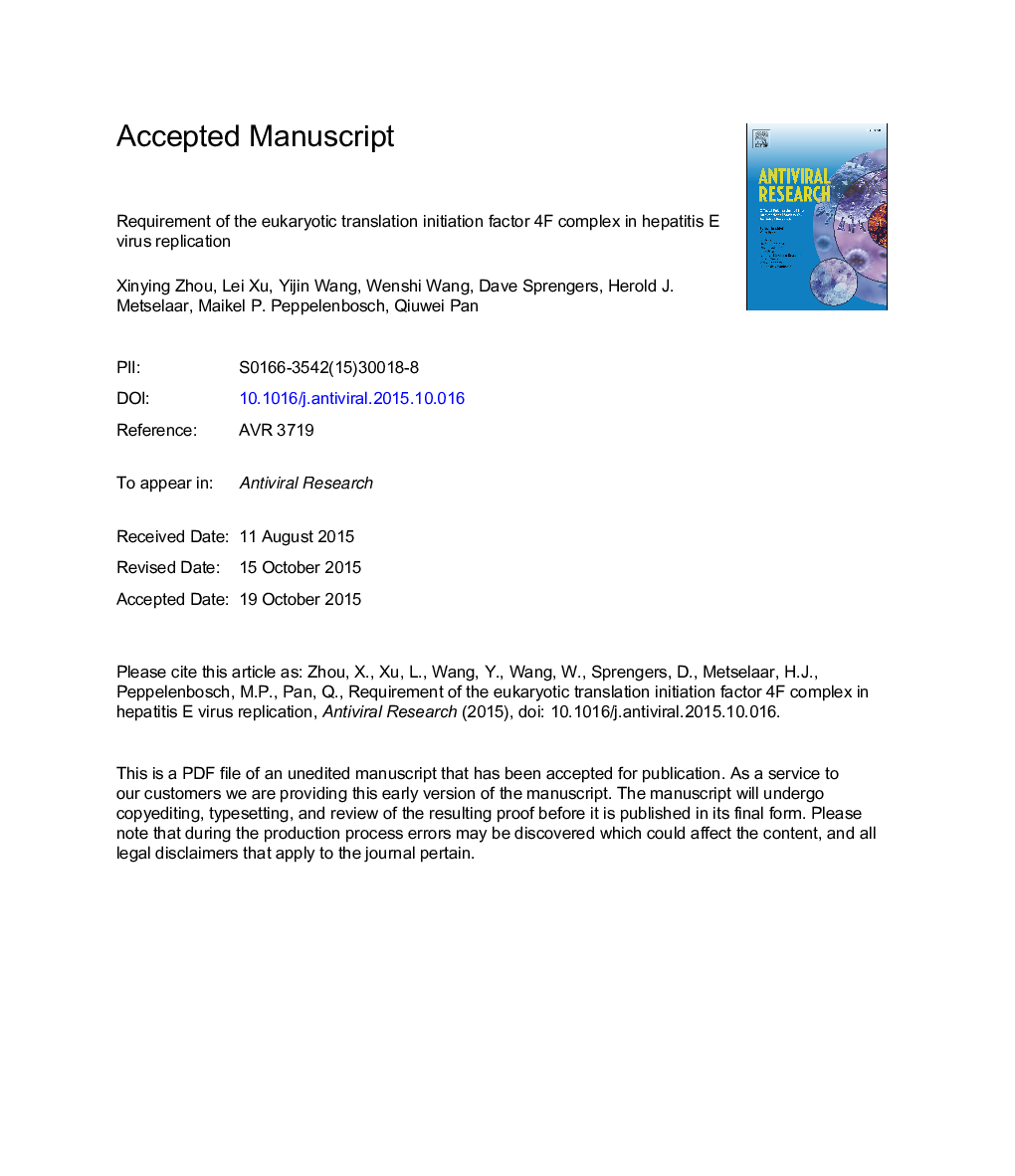| کد مقاله | کد نشریه | سال انتشار | مقاله انگلیسی | نسخه تمام متن |
|---|---|---|---|---|
| 5821861 | 1557819 | 2015 | 38 صفحه PDF | دانلود رایگان |
عنوان انگلیسی مقاله ISI
Requirement of the eukaryotic translation initiation factor 4F complex in hepatitis E virus replication
دانلود مقاله + سفارش ترجمه
دانلود مقاله ISI انگلیسی
رایگان برای ایرانیان
کلمات کلیدی
DMEMeIF4BeIF4FeIF4GeIF4E-binding protein 1Janus kinase 1JAK1PDCD44E-BP1eIF4EMEFsIFN-αHEVqRT-PCRDMSO - DMSODulbecco's modified Eagle Medium - Eagle Medium اصلاح شده DulbeccoeIF4A - eIF 4 AStat1 - sTAT1sodium dodecyl sulphate-polyacrylamide gel electrophoresis - الکتروفورز ژل دوده سولفات سدیم پلی آکریل آمیدSDS-PAGE - الکتروفورز ژل پلی آکریل آمیدinterferon - اینترفرونIFN - اینترفرون هاDimethyl sulfoxide - دیمتیل سولفواکسیدRibavirin - ریباویرین signal transducers and activators of transcription 1 - فرستنده های سیگنال و فعال کننده های رونویسی 1programmed cell death 4 - مرگ سلولی برنامه ریزی شده 4mouse embryonic fibroblasts - موش فیبروبلاست جنینیquantitative real-time polymerase chain reaction - واکنش زنجیره ای پلیمراز کمی زمان واقعی استHepatitis E virus - ویروس هپاتیت E
موضوعات مرتبط
علوم زیستی و بیوفناوری
ایمنی شناسی و میکروب شناسی
ویروس شناسی
پیش نمایش صفحه اول مقاله

چکیده انگلیسی
Hepatitis E virus (HEV) infection, one of the foremost causes of acute hepatitis, is becoming a health problem of increasing magnitude. As other viruses, HEV exploits elements from host cell biochemistry, but we understand little as to which components of the human hepatocellular machinery are perverted for HEV multiplication. It is, however, known that the eukaryotic translation initiation factors 4F (eIF4F) complex, the key regulator of the mRNA-ribosome recruitment phase of translation initiation, serves as an important component for the translation and replication of many viruses. Here we aim to investigate the role of three subunits of the eIF4F complex: eukaryotic translation initiation factor 4A (eIF4A), eukaryotic translation initiation factor 4G (eIF4G) and eukaryotic translation initiation factor 4E (eIF4E) in HEV replication. We found that efficient replication of HEV requires eIF4A, eIF4G and eIF4E. Consistently, the negative regulatory factors of this complex: programmed cell death 4 (PDCD4) and eIF4E-binding protein 1 (4E-BP1) exert anti-HEV activities, which further illustrates the requirement for eIF4A and eIF4E in supporting HEV replication. Notably, phosphorylation of eIF4E induced by MNK1/2 activation is not involved in HEV replication. Although ribavirin and interferon-α (IFN-α), the most often-used off-label drugs for treating hepatitis E, interact with this complex, their antiviral activities are independent of eIF4E. In contrast, eIF4E silencing provokes enhanced anti-HEV activity of these compounds. Thus, HEV replication requires eIF4F complex and targeting essential elements of this complex provides important clues for the development of novel antiviral therapy against HEV.
ناشر
Database: Elsevier - ScienceDirect (ساینس دایرکت)
Journal: Antiviral Research - Volume 124, December 2015, Pages 11-19
Journal: Antiviral Research - Volume 124, December 2015, Pages 11-19
نویسندگان
Xinying Zhou, Lei Xu, Yijin Wang, Wenshi Wang, Dave Sprengers, Herold J. Metselaar, Maikel P. Peppelenbosch, Qiuwei Pan,